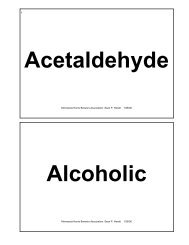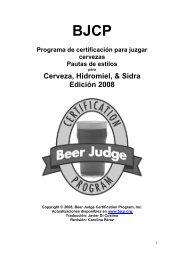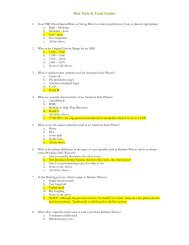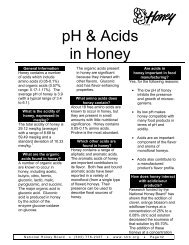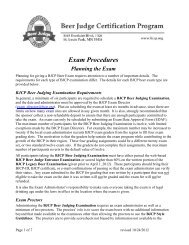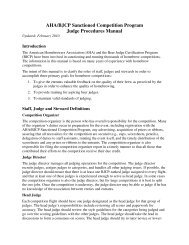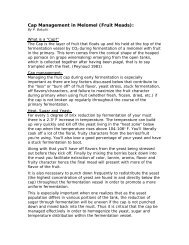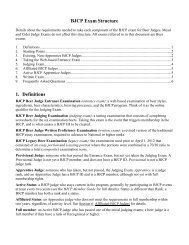You also want an ePaper? Increase the reach of your titles
YUMPU automatically turns print PDFs into web optimized ePapers that Google loves.
IV. INGREDIENTS AND THE BREWING PROCESSA. Waterby Ginger WotringWater constitutes 85-90% of beer, with the remainder being compounds derived from malt, hops, andyeast. As a general rule, if it is drinkable, it may be used in brewing, although some adjustments may beneeded to mimic the water used in some historical beer styles. Most tap water is also treated withchlorine to inhibit bacterial growth, and this should be removed to produce high-quality beer. Chlorinegas may be eliminated by boiling, but charcoal filtration or Campden tablets must be used to eliminatethe more commonly used chloramines. If reverse osmosis (RO) water is used, note that the RO processstrips out trace minerals such as iron, manganese, copper, and zinc, so yeast nutrients might need to beadded to compensate. These minerals are essential for a healthy fermentation, so mineral water is oftena better choice than reverse osmosis or deionized water. Finally, most water contains very lowconcentrations of bacteria, so it must be sterilized by boiling at some point in the brewing process.Alkalinity, pH and HardnessWater is a solution of ions with negative (anions) and positive (cations) charges. The water molecules(H 2 O) themselves are also partially dissociated into hydroxide (OH - ) and hydrogen (H + ) ions, and thepH, a chemical shorthand term referring to the concentration of hydrogen ions, indicates the relativeconcentrations of these ions. Neutral water has equal OH - and H + concentrations corresponding to a pHof exactly 7. Lower pH values indicate a higher H + concentration and acidic water, while higher pHvalues correspond to a higher OH - concentration and thus alkaline water. In brewing, the pH isdetermined by the hardness, alkalinity and buffering salts derived from the ingredients.Alkalinity is a measure of the capacity of the dissolved anions to neutralize reductions in the pH value ofthe solution. The most important anion at the pH of brewing water and wort is bicarbonate (HCO 3 - ),because HCO 3 - is the primary ion that determines the alkalinty of water. Bicarbonate reacts withCalcium (Ca +2 ) ions when boiled to form a calcium carbonate precipitate and water:Ca +2 + 2HCO 3 - = CaCO 3 (ppt) + H 2 O + CO 2 (gas)Boiling drives off CO 2 , thus forcing Calcium and HCO 3 - ions from solution and reducing the alkalinity.Permanent hardness is a measure of the cations that remain after boiling and racking the water from theprecipitate, and is primarily due to Ca +2 and Magnesium (Mg +2 ) ions. These cations are permanent ifthey are derived from sulfate or chloride salts and temporary if they originate in carbonate orbicarbonate salts.An important process in brewing that helps adjust the pH of the mash is the enzymatic degradation ofphytin in the malt to form phytic acid and calcium or magnesium phosphates, which precipitate. Most ofthe phytic acid combines with free Ca +2 to form more calcium phosphate, releasing hydrogen ions in theprocess. This reaction generally takes place during the acid rest and regulates the mash pH to the 5.2-5.7 range, which is appropriate for the breakdown of starches and proteins. Some water supplies havetoo much alkalinity for this process to be effective, in which case the mash pH must be reduced to theproper level by adding lactic or phosphoric acid to the brewing liquor.41




